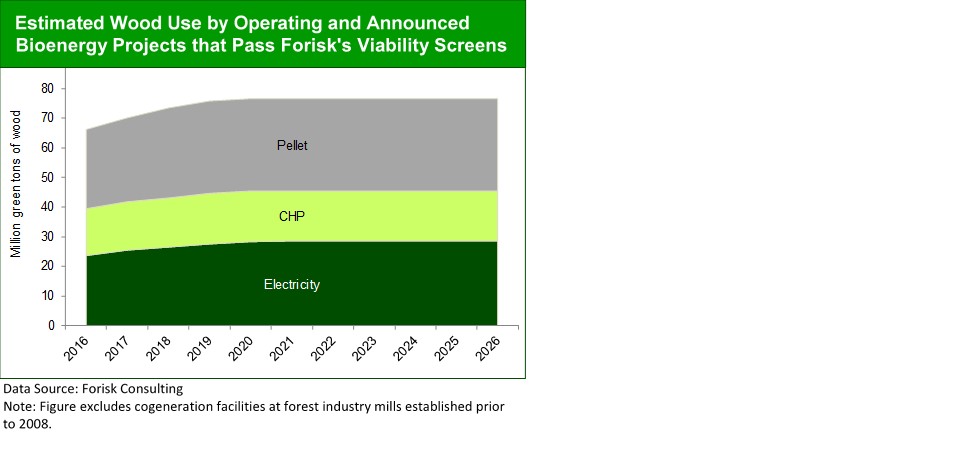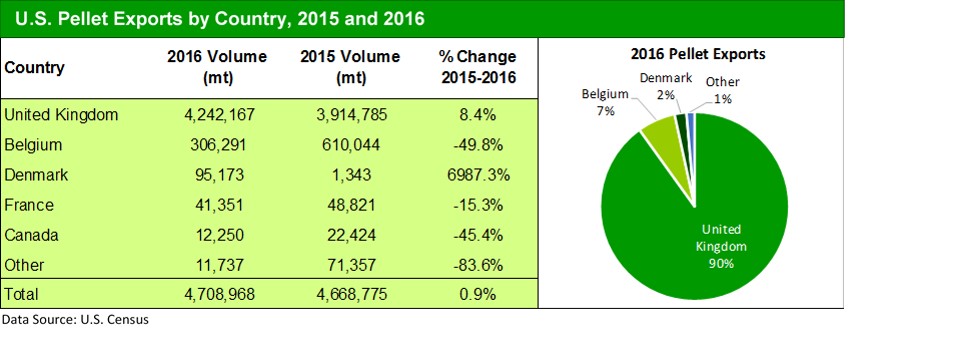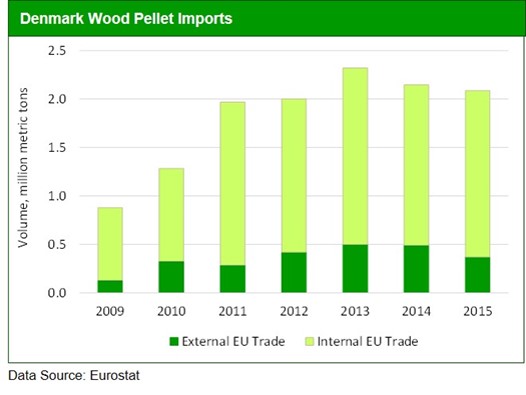This post includes an excerpt from the bioenergy research authored by Amanda Lang and Andrew Copley published in the Q1 2017 Forisk Research Quarterly (FRQ) Publication.
Forisk analysis suggests wood use for viable bioenergy projects in the U.S. will be 77.4 million tons per year by 2026.
As of January 20, 2017, Forisk’s wood bioenergy database tracks 439 operating and announced projects, up from 437 projects in October 2016. These projects represent potential wood use of 117.3 million tons per year by 2026. Based on Forisk analysis, 298 projects pass basic viability screening associated with technology and project development milestones, indicating potential wood use of 77.4 million tons per year. This is down 2.5% from the October 2016 estimate. The figure below details estimated wood use by bioenergy projects in the United States that pass viability screens for technology and project development through 2026.

In 2016, U.S. wood pellet exports were stable, increasing 0.9% relative to 2015 volumes.
The U.S. exported 4.7 million metric tons of wood pellets in 2016. The market share of exported U.S. wood pellets, however, remains consolidated. The United Kingdom imported 90.1%, over 4.2 million metric tons, of all U.S. wood pellet exports in 2016. Belgium, the second largest U.S. importer in 2016, imported 306 thousand or 6.5% of U.S. wood pellets. These two countries alone accounted for 96.6% of all U.S. wood pellet exports in 2016.

International power plant conversions from coal to biomass continue, which could bolster U.S. wood pellet export volumes. In Denmark, Dong Energy converted two combined heat and power (CHP) plants to burn wood pellets. Studstrup Unit 3, a 350 MW CHP, began using wood pellets in 4Q 2016. The 215 MW CHP Avedøre Unit 1 plant was also converted to use wood pellets in December 2016.
Despite being one of the world’s largest importers of wood pellets, the Danish have not historically sourced wood pellets from the U.S. Instead, most of Denmark’s wood pellet imports are sourced from countries within the EU, accounting for 82% of the wood pellet imports in 2015*. Of the pellets imported from outside the EU, Russia had 90% of the market share in 2015. The U.S. provided just over 1% of the total market share in 2015. This may change, however, given the magnitude of the Danish plants coming on-line and the available wood pellet export capacity in the U.S. South from the large creditworthy companies.

*data for the full year of 2016 has yet to be released
To download the most recent Wood Bioenergy Summary, click here.

Leave a Reply